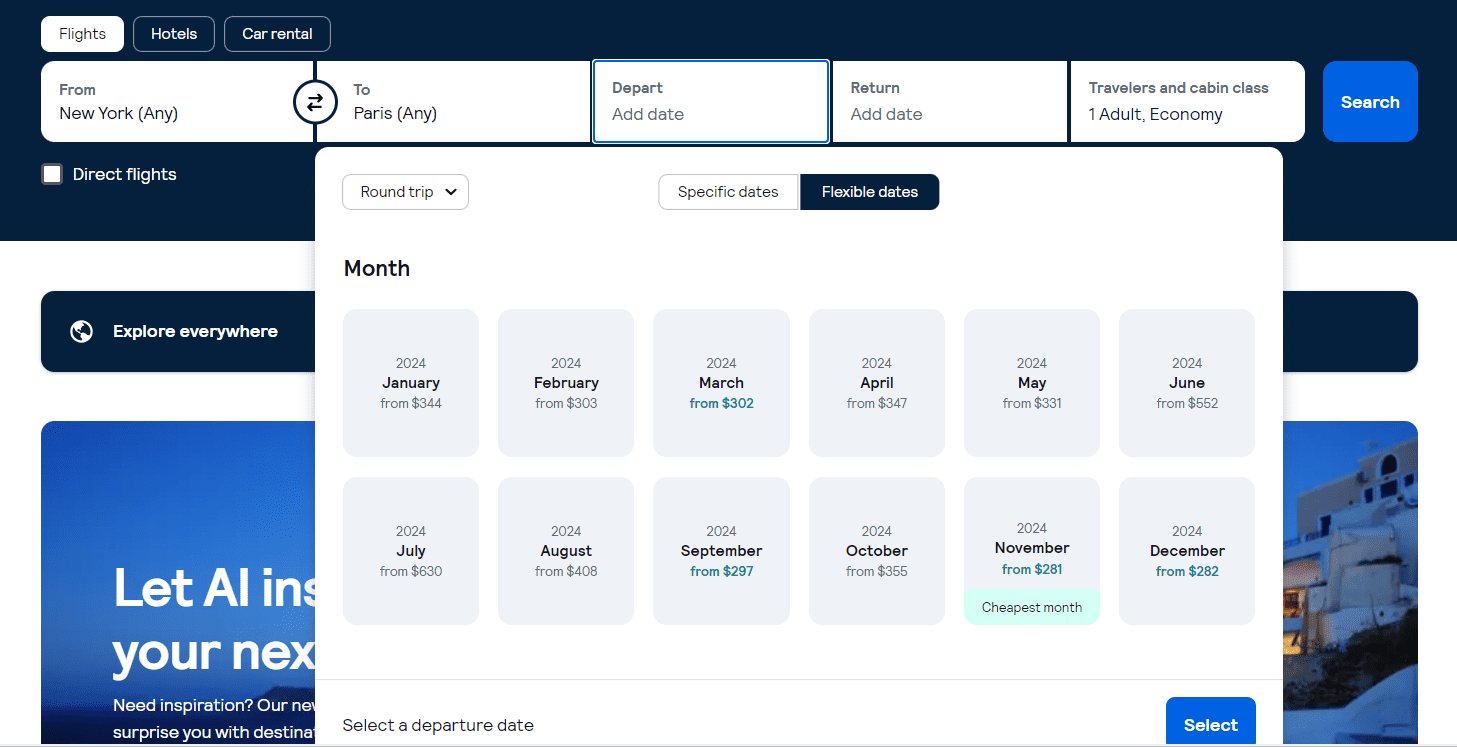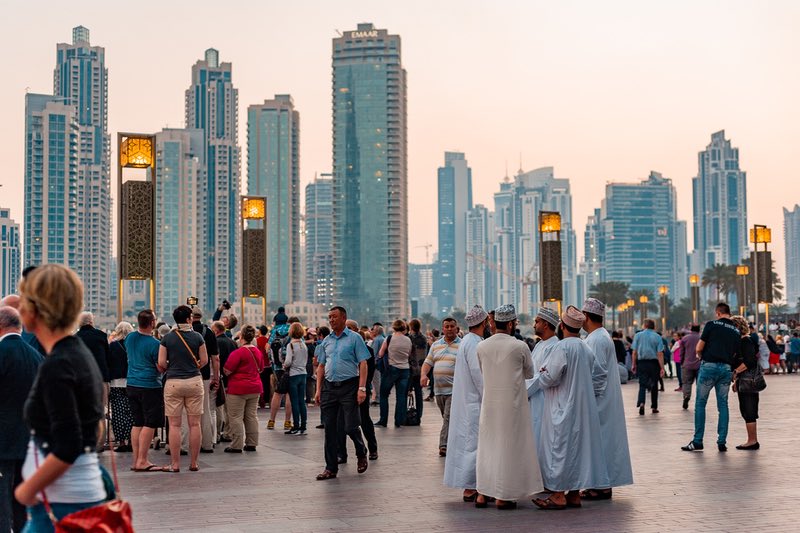Airfare is usually the most expensive part of any trip. Even though transatlantic flight prices have dropped a bit recently, they can still take a big chunk out of your travel budget. Whether you’re a solo traveler trying to save money or a family planning an international vacation, finding a cheap flight can make or break your trip.
If the cost of a flight is too high, you’ll probably keep putting the trip off — I’ve seen it happen so many times.
But here’s the thing: every day, airlines offer tons of great deals. From mistake fares to special promos and competitive price drops, cheap flights are out there. They can turn your dream trip into a reality — you just need to know where to look (I always start with Skyscanner).
Today, I’m going to walk you through how to find those cheap flights. These are the exact steps I’ve used for years to consistently get the lowest airfare, and if you follow them, you won’t be the one on the plane who overpaid for their ticket!
Here’s how you can score a cheap flight, no matter where you’re headed:
1. Ignore the Myths
When it comes to finding cheap flights, there’s no secret hack or magic trick. The internet is full of myths about how to score cheap airfare, and if you’ve ever searched for flight deals, you’ve probably come across a bunch of them.
But here’s the truth: they’re all false. These myths will only lead you in the wrong direction.
Many websites recycle outdated and misleading tips. Here are some of the most common myths that are completely untrue:
- Buying airfare on a specific day, like Tuesday, doesn’t guarantee lower prices.
- Searching in incognito mode doesn’t result in cheaper flights.
- There’s no magical time or exact number of days before a trip to buy tickets.
- Predicting airline prices is nearly impossible. Sites that claim to do so are just making an educated guess, and often, they’re wrong.
Airlines use sophisticated algorithms to determine ticket prices. These are based on various factors, including the time of year, demand, weather, major events, and even competitor pricing. The system is too advanced for those so-called “tricks” to work anymore, so it’s best to let them go.
If anyone tells you otherwise, they don’t know what they’re talking about.
2. Be Flexible with Your Travel Dates and Times
Flight prices vary widely depending on when you plan to travel. The day of the week, time of year, and even holidays can all impact the cost. For instance, prices spike during busy travel periods like Christmas, New Year’s, or during school holidays. August is peak travel season in Europe, and everyone wants to escape the cold during winter.
In short: if you’re flying when everyone else is, expect to pay more.
The key is to travel off-season. If you can be flexible with your travel dates, you’ll have a much better chance of finding a great deal. For example, if Paris is on your list, try visiting in the spring or fall when airfare is generally lower.
But if you’re set on going to Paris in mid-August or Hawaii during Christmas, brace yourself for sky-high prices.
It’s also cheaper to fly mid-week rather than on weekends since most people prefer to travel on weekends, and airlines know that. Similarly, early morning and late-night flights tend to be cheaper since fewer people want to travel at odd hours. Avoid flying on Fridays and Mondays if possible, as those days are popular with business travelers and prices tend to be higher.
When using a tool like Skyscanner, check out the flexible date feature. It allows you to see the cheapest months and dates to fly. For instance, if you’re flying from NYC to Paris, a quick glance will show that flying in September, November, or December could save you up to half compared to flying in June or July.

3. Be Flexible with Your Destinations
If changing your travel dates isn’t an option, being flexible with where you go can save you a lot of money. Ideally, it’s best to be flexible with both dates and destinations, but even one can make a huge difference in your budget.
Thanks to modern search engines, finding the cheapest flight to a variety of destinations is easier than ever. Websites like Skyscanner and Google Flights have explore features that allow you to search from your home airport to “everywhere.” You can literally see a map of the world with available flights and prices, which makes it super simple to find a budget-friendly option without spending hours manually searching city by city.
If you’re open to exploring different places, just type “Everywhere” in Skyscanner’s search box or “Anywhere” in Google Flights. You’ll likely discover some cool destinations that weren’t even on your radar!
The reality of airfare is that there’s almost always a deal — it just might not be to the exact place you had in mind. But if you’re flexible about where to go, you’ll always find a way to travel affordably and make some great memories along the way.
On the other hand, if you’re set on a specific destination at a fixed time, you’re stuck with whatever price is listed. Flexibility opens up a world of possibilities, and with it, the opportunity to snag those amazing airfare deals!
4. Keep an Eye on Special Deals
Before you start digging into flight searches, sign up for airline newsletters and last-minute deal sites. These mailing lists give you access to some of the best deals available. While not every offer will fit your travel plans, you’ll be able to spot incredible deals that you’d otherwise miss.
Many times, cheap flights are only available for a brief window—sometimes just 24 hours. Without staying on top of these deals, you could easily miss out. For example, I scored a round-trip ticket to Japan for $700 (usually $1,500) and another flight to South Africa for just $500 because I was signed up for deal alerts.
Besides flight discounts, airlines often offer frequent flyer bonuses through their newsletters. These can add up to free flights and upgrades over time, which is always a nice perk!
5. Fly Budget Airlines
Not too long ago, flying between continents meant shelling out for expensive, traditional airlines. But now, budget airlines have changed the game. While these airlines might not offer all the comforts of full-service carriers (you’ll likely need to pay extra for things like checked bags or meals), they can get you across the globe without breaking the bank.
Budget airlines primarily focus on short- and medium-haul routes. Even though some carriers, like Norwegian Air, cut their long-haul routes during the pandemic, new budget airlines such as PLAY, Norse Atlantic Airways, and French Bee have stepped in to fill the gap.
These low-cost carriers mostly operate regionally, making it easier than ever to find cheap flights, even during times when overall flight prices are higher.
Here’s a list of some of the most affordable budget airlines worldwide:
- Ryanair (Europe)
- EasyJet (Europe)
- Southwest Airlines (U.S.)
- Jetstar (Australia & Asia)
- AirAsia (Asia)
- Spirit Airlines (U.S.)
- Volaris (Mexico & Central America)
Flying with a budget carrier might mean fewer frills, but when it comes to stretching your travel budget, they can be a game-changer!
6. Don’t Always Fly Direct
In addition to being flexible with your dates and destinations, flexibility with your flight route can also save you money. Sometimes, taking an indirect flight can be much cheaper. For example, flying to London and then taking a budget airline to Amsterdam might be more cost-effective than flying directly to Amsterdam.
I once saved $240 by flying to Dublin instead of directly to Paris. The flight to Paris was $900, but flying to Dublin was $600, and I caught a $60 flight from Dublin to Paris. While it added some extra travel time, the savings made it worthwhile.
To try this method, compare the cost of a direct flight to your destination versus nearby airports. Use tools like Google Flights or Rome2Rio to explore alternative routes, and check the costs for travel between cities. If the savings are significant (e.g., over $150), it’s often worth it.
Just remember, if you book separate flights with different airlines, give yourself at least a three-hour buffer between connections to account for delays. This way, you’re covered by travel insurance if something goes wrong, as most policies require a delay of at least three hours before you can claim compensation.
7. Not All Search Engines Are Equal
When searching for flights, it’s important to check multiple websites. Many flight search engines don’t include budget airlines or international carriers that don’t pay commission. Some also limit search results to English-language booking sites.
Because no single search engine covers all flights, I recommend using several to compare prices. My top choices for finding cheap flights are:
- Skyscanner: The most comprehensive site, showing both major and budget airlines, as well as English and non-English websites.
- Google Flights: Offers a great interface and allows you to explore multiple destinations with ease.
Skyscanner is my go-to site, as it typically finds the lowest prices. However, for the best results, it’s always worth checking a few different sites before booking.
8. Take Advantage of Student Discounts
If you’re a student (or under 26), you can often find 10-20% discounts on flights. Websites like Flight Centre and Student Universe specialize in student travel deals, and many airlines also offer student discounts that aren’t always easy to find.
For example, Lufthansa offers a student discount, which extends to their partner airlines like Swiss and Austrian Airlines. This can help you travel farther for less. If you’re unsure whether a particular airline offers a discount, check their website or give them a call—it could save you a significant amount.
9. Mix and Match Airlines
When you book directly through an airline, you’re often limited to that airline and its partners. This can restrict your options when it comes to finding the cheapest itinerary.
Instead, consider booking each leg of your journey with different airlines. For example, if you’re flying from New York to Paris with a stop in London, you might find it cheaper to book New York to London with one airline and London to Paris with another. This can often lead to significant savings, though it requires more effort.
Third-party booking sites like Kiwi.com do this for you by piecing together different airlines to offer the cheapest possible price. However, you can also manually search for separate segments if you’re looking for the best deal.
10. Use Points and Miles
One of the best ways to save on flights is by using points and miles. Signing up for a travel credit card as soon as you start planning your trip can help you earn free flights, hotel stays, and travel perks. Many travel cards offer huge sign-up bonuses, airport lounge access, travel insurance, and more.
I personally earn over a million miles each year without flying or spending extra money, and it allows me to enjoy free flights, often in business class. Being strategic with your spending can lead to significant travel savings.
11. Search for Individual Tickets
When booking for a group, search for tickets individually rather than all at once. Airlines often show the highest fare available for a group of seats, which can mean you end up paying more.
For instance, if a family of four is booking seats and the airline has seats priced at $200, $300, and $400, they will likely show all the seats at $400. By booking individually, you can snag the cheaper fares for some of the seats and save money.
Once you have your tickets, you can select seats during checkout to ensure you all sit together.
12. Look for Tickets in Other Currencies
If your country’s currency is strong compared to others, check for airfare in a weaker currency. For example, when the U.S. dollar was strong compared to the New Zealand dollar, I found a flight from Australia to New York for $1,000 USD. However, by booking on the New Zealand version of the airline’s website, I found the same flight for $600 USD.
While this doesn’t always work, it’s worth trying if your currency is performing well on the global market.
13. Book Early (But Not Too Early)
Airline prices generally rise the closer you get to departure, but there’s a sweet spot when fares are lower. Booking too early or too late can mean higher prices. The best time to book is usually 2-3 months before departure, or around five months in advance if you’re traveling during peak season.
While this rule isn’t absolute, it’s a good guideline. Airlines tend to raise prices closer to the departure date because last-minute travelers, like business passengers, are often less sensitive to price and will pay more.
14. Book Hidden City Fares
This is a more advanced (and riskier) technique for finding cheap flights. A “hidden city” fare is when you book a flight with a layover in your desired destination but don’t take the final leg of the trip. For example, if you want to fly to Chicago but find a cheaper ticket to Denver with a layover in Chicago, you can simply get off at the layover.
This trick can lead to significant savings, but it comes with risks. If you’re traveling with checked luggage, it will likely be sent to the final destination. Additionally, airlines frown upon this practice, so it’s important to understand the potential consequences before using this method.


